PART 1
A Notice of Medicare Non-Coverage (NOMNC) is a notice that Medicare providers, including home health and hospice agencies and skilled nursing facilities, are required to provide to Medicare beneficiaries when their covered service(s) are ending. By understanding the purpose of the NOMNC and the process associated with issuing one, we can help our clients stay compliant and help our patients understand what is happening and their rights.
Here are the particulars:
- The NOMNC must be completed with the last service date and delivered at least 2 calendar days before covered services end (for daily care) or on the second to last day of service (if daily care is not being provided).
- Does this mean the NOMNC needs to be delivered 48 hours in advance? NO! This is NOT a 48-hour requirement. This is a calendar day or service day requirement.
- The beneficiary or representative must sign and date the NOMNC to demonstrate they received notice and understand they may dispute the termination decision.
- The NOMNC is a standardized 2-page form which can be altered only to add the business logo and contact information.
What if the patient agrees with the decision to end services, do they still need to receive a NOMNC?
- Yes! The provider still must issue a completed NOMNC and have it signed (by the beneficiary or representative).
What if the patient disagrees with the decision to end services?
- There is information on the NOMNC guiding them in the appeal process. They will be issued further information to assist with this process.
If the patient appeals, do we continue with services during the appeal process?
- If the decision to terminate services is upheld once reviewed, the patient will be financially obligated for the cost of care received during this period. They are informed of this when they appeal. Since each case may be different, the best thing to do is check with the business office before providing services during the appeal process.
What if the patient appeals and wins? – See Part 2 for examples and suggestions.
PART 2
Part 1 of our Notice of Medicare Non-Coverage (NOMNC) article explained the purpose and the process associated with delivering a NOMNC.
In part 2, we want to dig deeper into what to do if the patient appeals and wins. In most cases, we are involved with the NOMNC process when we have determined that the patient has reached maximum benefit from skilled services. During the appeal, our documentation will be reviewed, so if the decision is overturned, we should think through our decision-making and review our documentation. Here are common scenarios and considerations for next steps:
- The patient isn’t engaged in the rehabilitation process and is refusing therapy sessions.
- If you didn’t already, commit to implementing some of our strategies designed to promote patient activation and engagement.
- Ask the patient for their top 3-5 goals and enter them into the treatment guidance section of the TEN. At the beginning of each session, ask the patient which of those goals they’d like to be thinking about during the session. It’s okay to explain to them that doing so will help them get more out of the therapy session. We have a set of cards that can be used for this process, so check them out!
- During the session, link the activities you are doing to the goal they selected. For example, “The extra effort you are making to walk faster (or lift heavier weights) is going to help you build the strength and endurance you need to get back to playing cards with your buddies.”
- Rate the patient’s participation during the session using the Rating Participation Scale you can find on the Springboard. Do this with the patient and be honest about the behaviors you observed including the need to negotiate to find an activity in which they are willing to participate, the number and duration of rest breaks they take relative to the amount of activity they completed, or the level of encouragement they required to persist with an activity. Make a plan for one behavior they could change for the next session. Something like this, “Today, we did quite a bit of negotiating about what you were willing to do during therapy such that it was 7 minutes after we started the session before we were moving. Do you think we could cut that time in half tomorrow, so that we are moving within the first 3-4 minutes of our session?”
- Be sure to document your efforts around patient activation and engagement in the clinician role box and describe the patient behaviors in the clinician response box.
2. The patient’s activity limitations are not improving. They continue to require moderate or more assistance despite our efforts in treatment.
- If you haven’t already, review the patient’s progress with 1-2 activities with the patient. You may even want to show these on a graph.
- Talk with the patient about the different pathways we can take in rehabilitation, remediation, compensation, adaptation, and prevention. Review the pathway you’ve been on and discuss the need to change course. Often, we’ve been on the remediation pathway for an extended period of time, and we need to specifically shift gears to adaptation and prevention.
- Establish a program for out of bed activity and opportunity for participation.
- Determine the best seating device, adaptive equipment, or communication strategy and train building care givers on all shifts.
- If the patient has the cognitive capacity, teach them how to tell others how to help them.
- Update your goals to reflect your emphasis on caregiver success and patient participation.
- Document your new pathway and goals in a progress report and incorporate return demonstration and teach back as measures of learning for the patient and care givers.
- Consider whether there are elements of the patient’s care that require the manual skills, monitoring and related adjustments, or communication strategies unique to therapists. If so, consider a skilled maintenance program and document the need based on the analysis above.
3. The patient’s spouse (or child, significant other, etc) wants to take the patient home.
- Set up a schedule for family teaching immediately. Be sure they plan to spend extended periods with the building participating in all care processes.
- Engage the potential caregiver in all aspects of the patient’s care.
- Use return demonstration and teach back to measure their learning.
- Check in with the caregiver about their confidence with the skills they are learning. Provide feedback about their confidence and the skills they are demonstrating, especially any concerns you have about their success.
- Share your observations with the IDT.
- Document the education efforts and the caregiver’s response.
- As above, consider the need for skilled maintenance therapy.
So, what do you do if the patient appeals our decision to terminate covered services and wins? See it as a learning opportunity. If you have questions about these ideas or other situations, don’t hesitate to contact us at INFCompliance@infinityrehab.com.
PDFs of part 1 and part 2 are available to download below.






